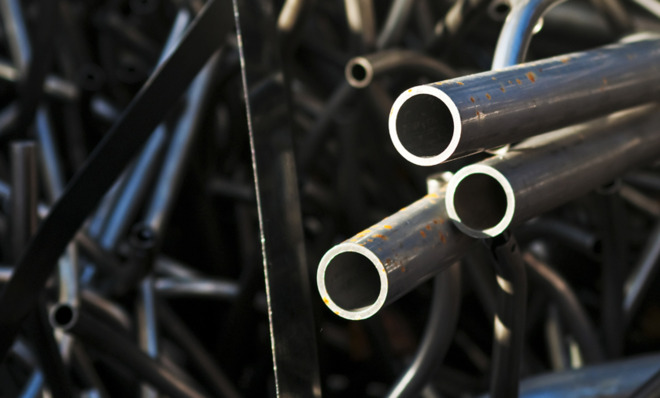Scientists accidentally discover a metal that heals itself
Imagine the possibilities of a self-repairing bridge in an earthquake-prone city

A few months ago, a team of European scientists engineered a miraculous self-healing polymer that could change our lives for the better. Imagine furniture that lasts a lifetime, or eyeglass frames that piece themselves back together after a few hours of being wrapped up with scotch tape. Such technology could have huge ramifications in countless industries.
Now imagine those same basic healing principles, but applied to a material that's even more pervasive: Metal.
MIT researchers "accidentally" stumbled on a remarkable new property in a nickel superalloy that could change the way we approach architecture, industrial design, cars — you name it. The team, led by graduate student Guoqiang Xu, found that when force is applied to a crack in the metal to pull it apart, the damaged areas counter-intuitively fused together. The superalloy self-repaired.
The Week
Escape your echo chamber. Get the facts behind the news, plus analysis from multiple perspectives.

Sign up for The Week's Free Newsletters
From our morning news briefing to a weekly Good News Newsletter, get the best of The Week delivered directly to your inbox.
From our morning news briefing to a weekly Good News Newsletter, get the best of The Week delivered directly to your inbox.
At first the research team had no idea why this was happening. "We had to go back and check," said Michael Demkowicz, a professor of science and engineering at the university, who worked with Xu. "Instead of extending, [the crack] was closing up. First, we figured out that, indeed, nothing was wrong. The next question was: 'Why is this happening?'"
To answer the question they created a computer model of the crystalline nickel alloy's microstructure. Most metals are composed of tiny, crystalline grains that give them their signature characteristics, stuff like strength and durability. Iron, for example, is more brittle than a compound more resilient to stress, like steel.
In the case of MIT's self-healing superalloy, a computer simulation revealed what was happening to the individual microcrystalline grains (the white hexagons in the video above). The term for what was happening is disclination, which requires the fracture to extend only partway into a grain, but not all the way through it. For a long time, metal experts considered it a defect.
These defects have intense stress fields, which "can be so strong, they actually reverse what an applied load would do," Demkowicz says: In other words, when the two sides of a cracked material are pulled apart, instead of cracking further, it can heal. "The stress from the disclinations is leading to this unexpected behavior," he says.
Having discovered this mechanism, the researchers plan to study how to design metal alloys so cracks would close and heal under loads typical of particular applications. Techniques for controlling the microstructure of alloys already exist, Demkowicz says, so it's just a matter of figuring out how to achieve a desired result. [MIT]
The extremely controlled conditions means we're not quite in T-1000 territory. Yet. But the practical applications could be huge, particularly for important things like city infrastructure. Self-healing bridges or highway overpasses in, say, earthquake-prone San Francisco? Yes, that would be great.
A free daily email with the biggest news stories of the day – and the best features from TheWeek.com
-
 Farage’s £9m windfall: will it smooth his path to power?
Farage’s £9m windfall: will it smooth his path to power?In Depth The record donation has come amidst rumours of collaboration with the Conservatives and allegations of racism in Farage's school days
-
 The issue dividing Israel: ultra-Orthodox draft dodgers
The issue dividing Israel: ultra-Orthodox draft dodgersIn the Spotlight A new bill has solidified the community’s ‘draft evasion’ stance, with this issue becoming the country’s ‘greatest internal security threat’
-
 Codeword: December 13, 2025
Codeword: December 13, 2025The daily codeword puzzle from The Week
